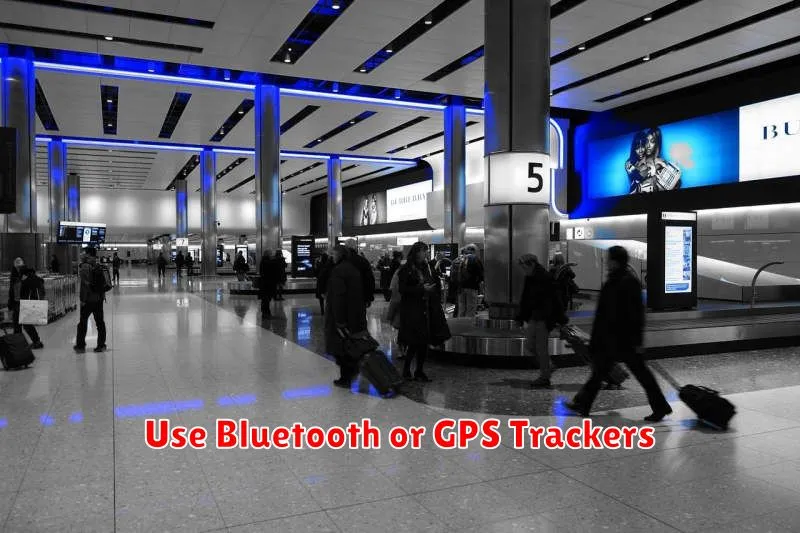Losing your luggage can be a traveler’s worst nightmare. In today’s interconnected world, however, real-time luggage tracking offers peace of mind and control over your belongings like never before. This article will explore the various methods available for tracking your luggage in real-time, allowing you to monitor its journey from check-in to baggage claim, and minimize the stress associated with lost or delayed bags. Learn how to utilize luggage trackers, airline apps, and other innovative technologies to stay informed about the whereabouts of your luggage every step of the way.
From real-time updates on your luggage’s location to proactive notifications about delays or changes, understanding how to track your luggage empowers you to travel with confidence. Whether you’re a frequent flyer or an occasional traveler, this guide will provide you with the knowledge and resources necessary to track your luggage in real-time, ensuring a smoother, more enjoyable travel experience. Discover the latest advancements in luggage tracking technology and take control of your belongings on your next trip.
Why Luggage Tracking Matters
In today’s interconnected world, knowing the whereabouts of your luggage provides invaluable peace of mind. Lost or delayed baggage can significantly disrupt travel plans, causing inconvenience, stress, and added expenses. Tracking capabilities allow you to monitor your bags’ journey in real-time, reducing anxiety and uncertainty.
Real-time tracking empowers travelers to take proactive steps if a bag is misdirected or delayed. You can immediately notify the airline or relevant authorities, increasing the chances of a swift recovery. This knowledge allows you to adjust your plans accordingly, minimizing disruptions to your itinerary.
Beyond personal convenience, luggage tracking contributes to a more efficient baggage handling system overall. By providing real-time data, airlines can identify and address potential bottlenecks or systemic issues, ultimately improving service and reliability for all passengers.
Furthermore, the ability to pinpoint your luggage’s location can be crucial in cases of theft or loss. Having access to this information streamlines the process of filing claims and recovering your belongings. This added security measure offers significant protection against potential losses.
Use Bluetooth or GPS Trackers

One effective method for real-time luggage tracking involves using Bluetooth or GPS trackers. These small devices can be placed inside your luggage and transmit their location to your smartphone or other connected device.
Bluetooth trackers have a limited range and rely on the proximity of other Bluetooth-enabled devices to update their location. They are best suited for tracking luggage within a relatively small area, such as an airport terminal or a crowded tourist spot. These trackers excel at preventing luggage misplacement within short distances and are generally more affordable than GPS trackers.
GPS trackers, on the other hand, utilize satellite signals to pinpoint the location of your luggage anywhere in the world with cellular coverage. They provide more comprehensive tracking capabilities, especially for international travel. While typically more expensive than Bluetooth options, GPS trackers offer greater peace of mind by providing real-time location updates regardless of proximity to other devices.
When choosing between Bluetooth and GPS trackers, consider your budget and specific travel needs. For short trips and proximity tracking, Bluetooth may suffice. For extensive journeys and international travel, the global reach of GPS trackers is usually preferred. Both options can significantly improve your ability to monitor your luggage’s location and enhance your travel experience.
Apps That Sync with Your Suitcase

Several luggage brands now offer smart suitcases with built-in tracking technology. These suitcases often sync with dedicated apps on your smartphone, providing real-time location updates. Compatibility is key, so ensure your chosen suitcase works with your preferred operating system (iOS or Android). Features vary, but some common functionalities include proximity alerts, last-known location tracking, and even integrated digital scales.
Beyond brand-specific apps, there are also third-party applications designed to work with various tracking devices. These typically require a separate purchase of a small tracking device that you place inside your suitcase. These devices communicate with your phone via Bluetooth, cellular networks, or other wireless technologies. Selecting the right tracker depends on your needs and budget. Consider battery life, range, and any associated subscription fees.
Track During Layovers and Transfers
Tracking your luggage during layovers and transfers is crucial for peace of mind. Most airlines’ baggage tracking systems update automatically as your luggage is scanned at each stage of its journey. This includes layovers and connecting flights.
You can usually track your bags through the airline’s website or mobile app using your baggage claim tag number or booking reference. Pay close attention to the updates during transfers. A delayed connecting flight can sometimes mean your luggage makes it to the final destination while you do not, and vice-versa. Knowing your luggage’s location helps you coordinate retrieval if necessary.
Be aware that there might be a slight delay in updates while bags are being transferred between aircraft. If you notice any significant discrepancies or your luggage status doesn’t update after a reasonable timeframe, contact the airline directly for assistance.
Set Alerts for Unexpected Movement
Real-time tracking often allows you to set alerts for unexpected movement. This feature provides an extra layer of security. You can configure notifications to be sent to your phone or email if your luggage moves outside a designated area or beyond a certain distance. This can be especially helpful during layovers or if your luggage is unexpectedly rerouted.
Consider setting a geofence around your destination airport or hotel. If your luggage leaves this designated area, you’ll receive an immediate alert. This allows you to quickly investigate the situation and contact the airline or relevant authorities if necessary.
Some trackers offer different sensitivity levels for movement alerts. You can adjust these settings based on your individual needs and preferences. For example, you might want to set a higher sensitivity level if you’re concerned about theft or a lower sensitivity level if you anticipate minor movements during handling.
Notify Airlines with Real-Time Data
Real-time luggage tracking offers the significant advantage of enabling you to promptly notify airlines about any location discrepancies. If your luggage goes off course, you can immediately alert the airline with accurate, real-time location data. This empowers them to take swift action to locate and reroute your bag, minimizing delays and potential loss.
Providing this real-time data eliminates the need for lengthy searches and vague descriptions, which often hinder traditional baggage recovery processes. By knowing precisely where your luggage is, airlines can proactively address the situation, potentially intercepting it at a connecting airport or arranging for faster delivery to your destination.
This proactive notification can be particularly helpful if your luggage is mistakenly loaded onto the wrong flight. The airline can take action before the incorrect flight reaches its final destination, simplifying the process of retrieving your bag and minimizing inconvenience. This immediate communication significantly improves the likelihood of a timely reunion with your belongings.
Prevent Losses and Speed Up Recovery
Real-time luggage tracking plays a crucial role in preventing losses and expediting the recovery process should your baggage go astray. By knowing the location of your bag, you significantly reduce the chances of it being permanently lost.
Proactive tracking allows you to immediately report discrepancies if your luggage doesn’t arrive at your destination with you. This quick action enables airport staff to begin searching sooner, increasing the likelihood of a swift reunion with your belongings.
Furthermore, if your bag is misplaced or accidentally taken, real-time tracking provides precise location data. This information is invaluable for airlines and ground handling staff, enabling them to pinpoint your luggage’s whereabouts and efficiently return it to you.
Consider using identifying features in conjunction with your tracker. A brightly colored luggage tag or a unique strap can help differentiate your bag and facilitate quicker identification, especially if the tracker’s battery fails or if it’s removed. This provides an additional layer of security and aids in the recovery process.

